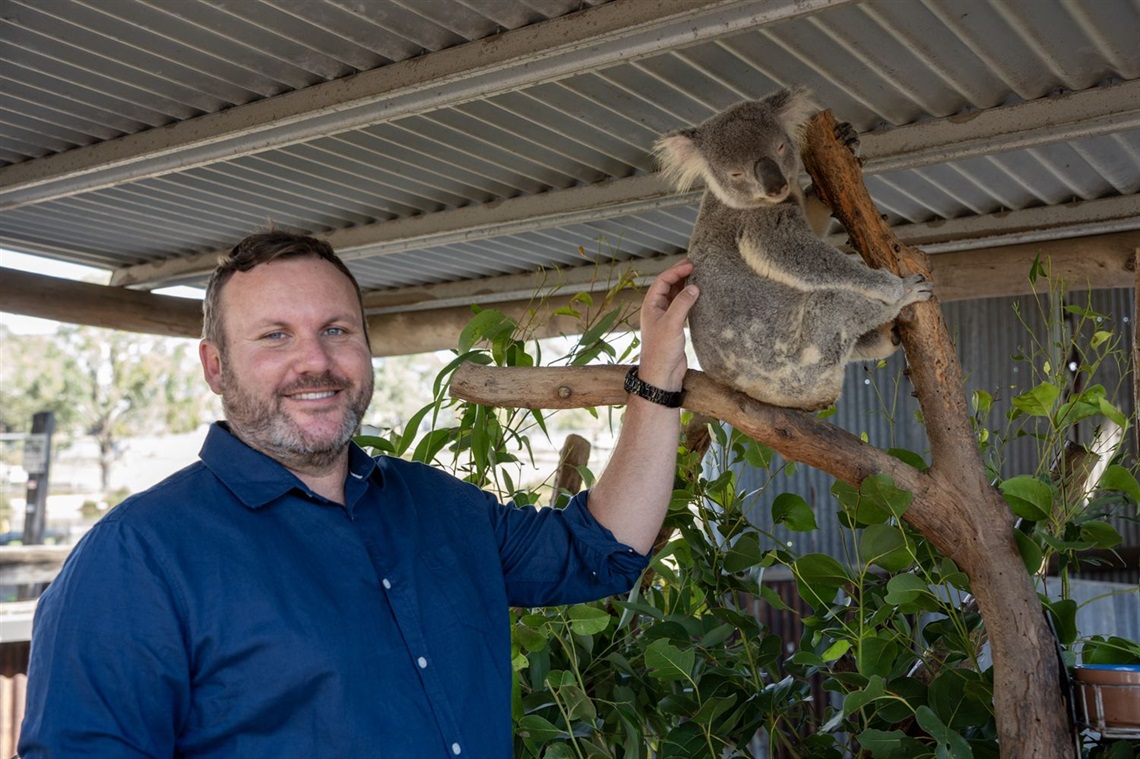Koala Habitat Study launches to help conserve local populations
Published on 17 April 2025

Mayor Daniel Watton, with a koala at Hunter Valley Wildlife Park
In the face of growing threats to koala habitats, Cessnock City Council is partnering with the NSW Koala Strategy and launching a comprehensive study aimed at identifying koala habitat and building knowledge of the local koala population to better understand how to protect this iconic species.
Council is calling on local landholders to voluntarily participate in the project by allowing access to their properties for surveying purposes, in order to gather valuable data for the study. The study will include vegetation and koala habitat mapping along with targeted koala surveys across the local government area.
Cessnock City Mayor Dan Watton said significant advancements in technology and koala surveying methods made through the NSW Koala Strategy have furthered our understanding of the species, but the population in the Cessnock Local Government Area represented a significant knowledge gap in conservation efforts.
"This study is a vital step to provide us with the necessary data to properly identify key areas where koalas are located in Cessnock, and allow us to make more informed future decisions regarding land management and conservation practices," said Clr Watton.
"By collaborating with leading experts, we can ensure we’re adopting the most effective measures so that our local koala population continues to thrive for generations to come."
"I highly encourage local residents and land holders, particularly those in the Quorrobolong, Mulbring and Mount Vincent areas, to get involved in the study by having teams conduct surveys on their property."
Additionally, people who spot a koala in the Cessnock LGA can easily report the sighting through the NSW Government’s ‘I Spy Koala’ app. The data collected through the app goes to BioNet – the NSW corporate biodiversity data repository – and informs research, land management, planning, and long-term conservation efforts to protect koala populations.
To learn more about the project and how to get involved, visit the project page here.